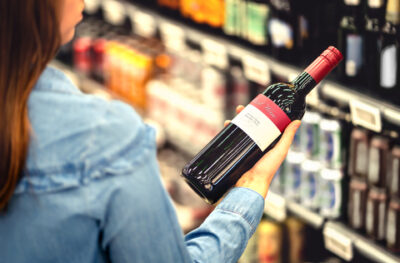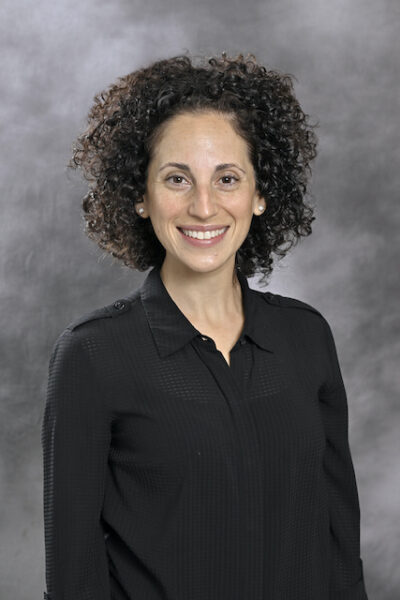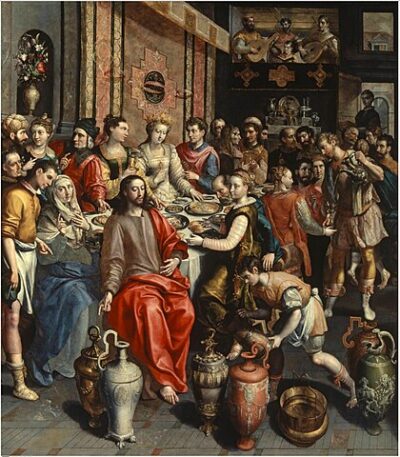Will liquor cancer warnings be the grapes of wrath?

| Dreamstime.com
On the third day of the month now known as “Dry January” for its new wellness focus, Surgeon General Vivek Murthy, M.D., issued a report that has created a buzz from liquor stores and restaurants to hotels and country clubs, wineries and Wall Street. It’s one that is sure to follow the nation through Sunday, Feb. 9’s Super Bowl parties, Valentine’s Day dinners – and beyond.
The Surgeon General’s Advisory on Alcohol and Cancer Risk links increased risk for breast, colorectum, esophagus, liver, mouth (oral cavity), throat (pharynx) and voice box (larynx) cancers to alcohol consumption, the third leading preventable cause of cancer in the United States after tobacco use and obesity. The Surgeon General’s Advisory includes a series of recommendations to increase awareness to help minimize alcohol-related cancer cases and deaths, including updating the existing Surgeon General’s health warning label on alcohol-containing beverages to reflect the cancer risk. (Ireland, famed for its pub culture, will nonetheless be the first country in the world to require such labels, beginning in 2026.)
“Alcohol is a well-established, preventable cause of cancer responsible for about 100,000 cases of cancer and 20,000 cancer deaths annually in the United States – greater than the 13,500 alcohol-associated traffic crash fatalities per year in the U.S. – yet the majority of Americans are unaware of this risk,” Murthy said in a statement. “This advisory lays out steps we can all take to increase awareness of alcohol’s cancer risk and minimize harm.”
The advisory comes at a moment when certain kinds of cancer, now often a chronic rather than fatal disease, are striking young and middle-aged adults more frequently, with women, Blacks and Native Americans disproportionately affected. (These include breast, uterine, colorectal, prostate and pancreatic cancers as well as melanoma.)
And while correlation is not necessarily causation, a recent report by the American Association for Cancer Research has suggested that alcohol consumption may be a factor in the rise of breast and colorectal cancers in adults under 50 – an ascendance that the Westfair Business Journal covered last year.
There are some who think Murthy’s recommendations are moot as he is slated to be replaced by deregulation-friendly President Donald J. Trump’s nominee for surgeon general, Janette Neshelwat, M.D. – although Trump, like former President Joe Biden, is a teetotaler who has been deeply affected by the presence of alcoholism in his family. No word yet on what the president, whose Trump Organization owns hotels and resorts the could be affected, might do. (Upgrading the health risk-warning label would still require an act of Congress.)
For others, including those in the medical community and the billion-dollar beverage industry, with its multimillion-dollar lobby, the conversational cork is finally off the bottle.

“I’m so happy the surgeon general has come out with this report,” said Yael S. Zack, M.D., a medical oncologist and hematologist with White Plains Hospital Physician Associates who is the founder and director of the Young Women’s Program for Cancer Care. “I and many colleagues have been preaching for many, many years about this risk….Alcohol is a carcinogen….Some things you have control over. Some things you don’t. But these lifestyle modifications are things you can take into your own hands.
“For those who don’t drink, don’t start,” she said, adding that for those who do, limit your intake to one or two glasses a week or to that special occasion, while following her other guidelines. (See below.) The National Institute of Alcohol Abuse and Alcoholism (NIAAA) defines a standard drink as one that contains roughly 14 grams of pure alcohol, or 1.5 ounces of distilled spirits (approximately 40% alcohol by volume); 5 ounces of wine (approximately 12% ABV); or 12 ounces of regular beer (approximately 5% ABV).
“Of course, it is a poison to our bodies,” added Josh Mesnik, owner and operator of Josie & Tony’s, a hybrid dining establishment (daytime Arthur Avenue-style sandwich shop/nighttime supper club) in South Norwalk, and a trained sommelier. “People like to look the other way with alcohol. It’s a drug that is acceptable for us.
“Putting a warning label on liquor I don’t think will hurt my business” – 45% of which comes from beverage sales, with the industry average being 30% to 40%, he said.
However, the post-advisory fall in stock prices of alcohol manufacturers like Anheuser-Busch and Molson Coors – companies that are sure to be on prominent display once again in Feb. 9’s Super Bowl ads – underscores a difficult moment for an industry that has seen slumping post-pandemic sales and a roughly !5% inflationary rise in prices that could be increased by more import tariffs.
Nonetheless, Mesnik said, “I think (warning labels) give people a certain level of health consciousness.”

Few people are more conscious of the perils of drugs and alcohol – or more self-aware, for that matter – than the frank Mesnik, a recovering drug and alcohol addict who said he has had two recent lapses. (Asked about being a sommelier, he said he can perform that role, because he tastes the wine and spits it out. For him, taste has never been the trigger but rather mental health issues.)
While Mesnik would not want to see a ban on alcohol – which the nation (with the exception of Connecticut and Rhode Island) ratified in Prohibition (1929-33), then repealed – he added that “it’s very important that we stop ignoring the science.”
But how that would work in a country with an ambivalent attitude toward science and a long love affair with liquor might come down to the strength of the counternarrative. Here it’s instructive to look at the tobacco industry, whose products and especially marketing campaign were once more deeply ingrained in American society than they are today. Even now, those of a certain vintage will recall not only Hollywood movies that glamorized smoking but commercials for Lark and Marlboro cigarettes set to Rossini’s “William Tell Overture” and Elmer Bernstein’s score for “The Magnificent Seven” respectively, along with beautiful print ads of the “Marlboro Man” in a dusky, snowy western twilight — not to mention Virginia Slims’ feminist boast that “you’ve got your own cigarette now, baby. You’ve come a long, long way.”)
Virginia Slims – which like Lark and Marlboro, along with more than 130 other brands and a smoke-free but not risk-free portfolio, is manufactured by Stamford-based Philip Morris International (PMI) – sponsored the new Women’s Tennis Association in the 1970s through early ’90s. Virginia Slims has the distinction of being the last brand to have an ad air on TV (NBC’s “The Tonight Show Starring Johnny Carson,” Jan. 1, 1971) before the implementation of the Public Health Cigarette Smoking Act. This was the culmination of seven years’ work that saw the surgeon general’s tobacco warning; a federal mandate on cigarette cancer labels; and Action on Smoking and Health’s complaint to the Federal Communications Commission, under the FCC’s fairness doctrine, that TV and radio stations should provide free time for antismoking advertising when they aired paid cigarette advertising – ultimately ending cigarette advertising on those media.
Yet according to Grand View Research, the U.S. tobacco market size was valued at $75.9 billion in 2021 and was expected to expand at a compound annual growth rate (CAGR) of 3.4% from 2022 to 2030. Statista estimates alcohol revenue to be $318.2 billion this year.

While the history of smoking in religious rituals dates from 5000 B.C., the history of drinking goes back even further to the Stone Age. It’s the subject of ancient Greek tragedy (Euripides’ “The Bacchae”) and the Gospels (where Jesus turns water into wine, foreshadowing his Crucifixion, at the wedding feast in Cana). Observers note that liquor is associated not only with celebrations but the sociability of everyday meals. New York Yankees’ legendary centerfielder Bernie Williams, a jazz musician who has developed three red blends with the Hudson Valley’s Millbrook Vineyards & Winery LLC, told the Westfair Business Journal for an upcoming profile that one of the reasons he got interested in wine is because of his fascination with the art of pairing it with food.
“I have had many family meals whereby wine becomes the topic,” added David H. Bova, vice president and general manager of Millbrook Vineyards and Winery and Vista Verde Pebble Ridge Vineyards LLC in Paicines, California. “Discussions on where it is made, how it was made, what grapes are used, how long in oak, all contribute to a joyful and interesting meal. Wine is a living product and, in my world, adds value as an interesting form of beverage in moderation. I will never forget my first taste of a great Bordeaux wine: It blew my socks off.”
Given all this, it’s hard to imagine a revolution in attitude toward drinking in the United States. But Mesnik, whose Josie & Tony’s has one of the largest nonalcoholic beverage programs in Connecticut with more than a dozen nonalcoholic beers, a few nonalcoholic wines and bespoke cocktails, said an evolution is underway. He is seeing patrons who would have two drinks instead order a nonalcoholic one and then a glass of wine.
“I feel you have to start somewhere,” White Plains Hospital’s Zack added. “Everyone knows tobacco causes cancer. These findings (about alcohol) will hopefully make a dent.”

Moderating alcohol consumption
“Here are some tips I learned from our White Plains Hospital Cancer Center nutritionist Cheryl Leslie and pass on to my patients,” said Yael S. Zack, M.D.:
- Have alcohol free days.
- Find other outlets for relaxation rather than having an alcoholic beverage.
- Don’t make having a glass of wine part of your food prep.
- Limit alcohol consumption to only when socializing.
- Alternate every other drink with a glass of water or seltzer.
- Have a wine spritzer instead of a glass of wine.
- Offer to be the designated driver.
- Enjoy many of the alcohol-free options that are now available.